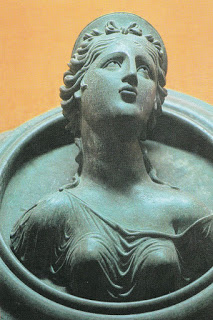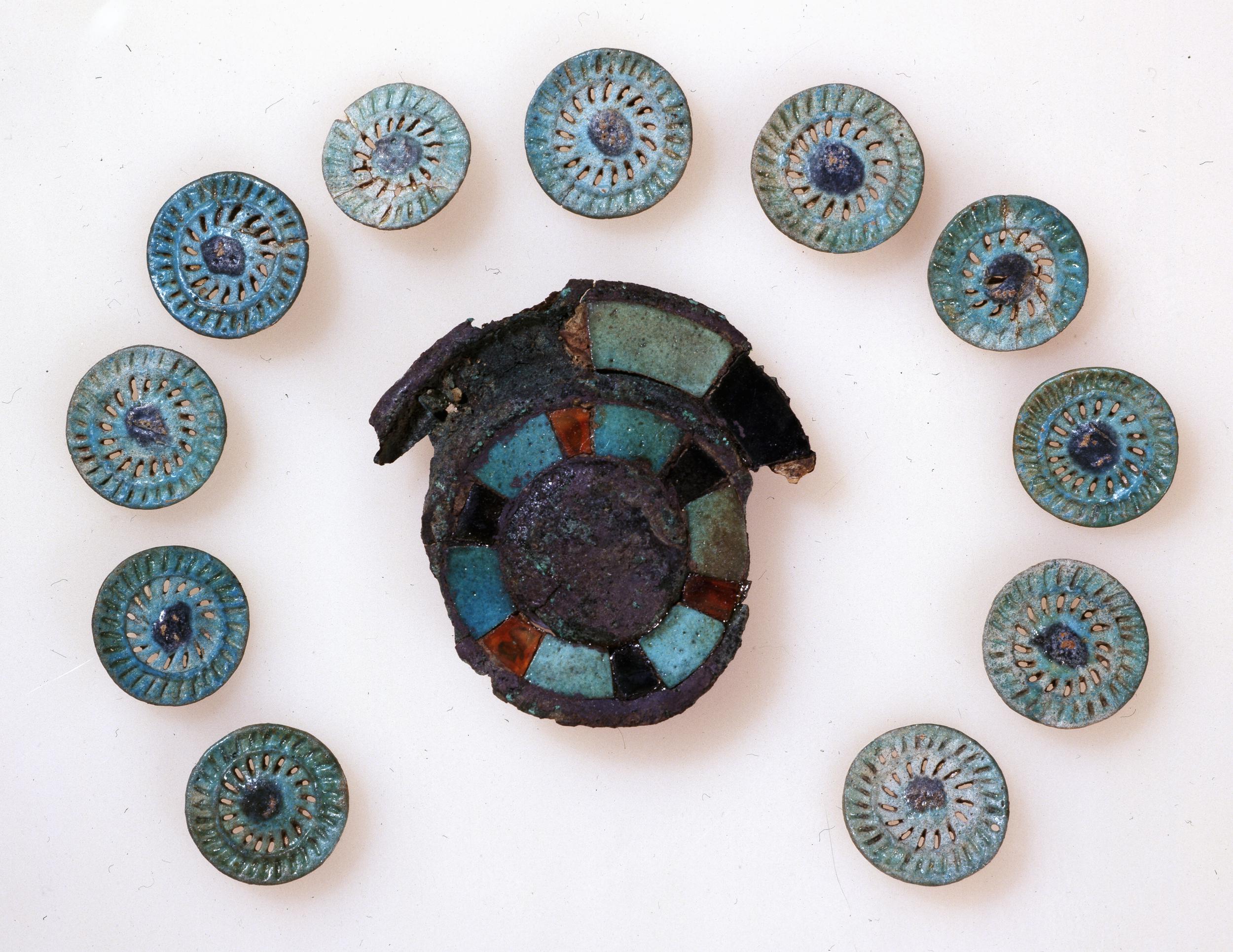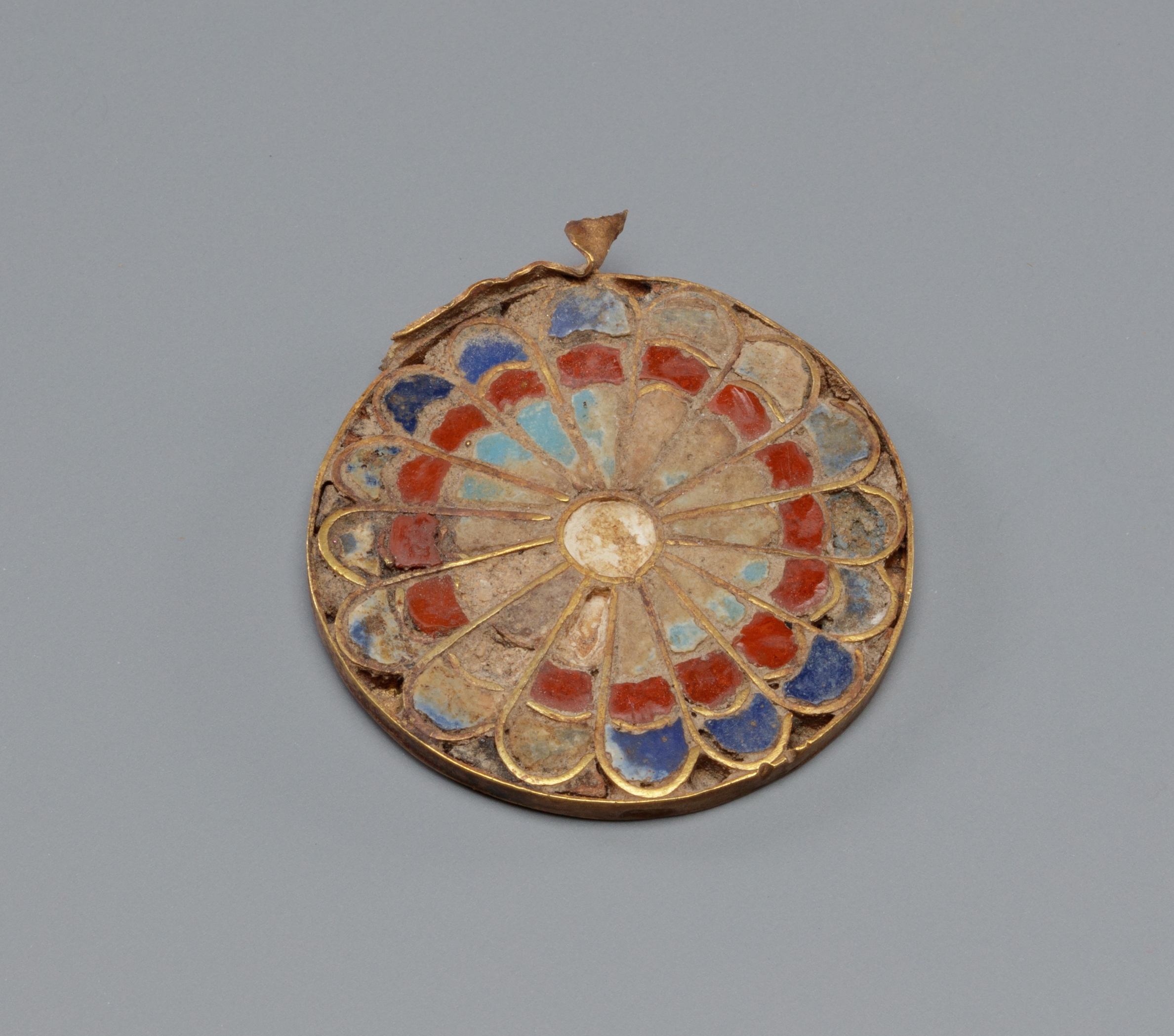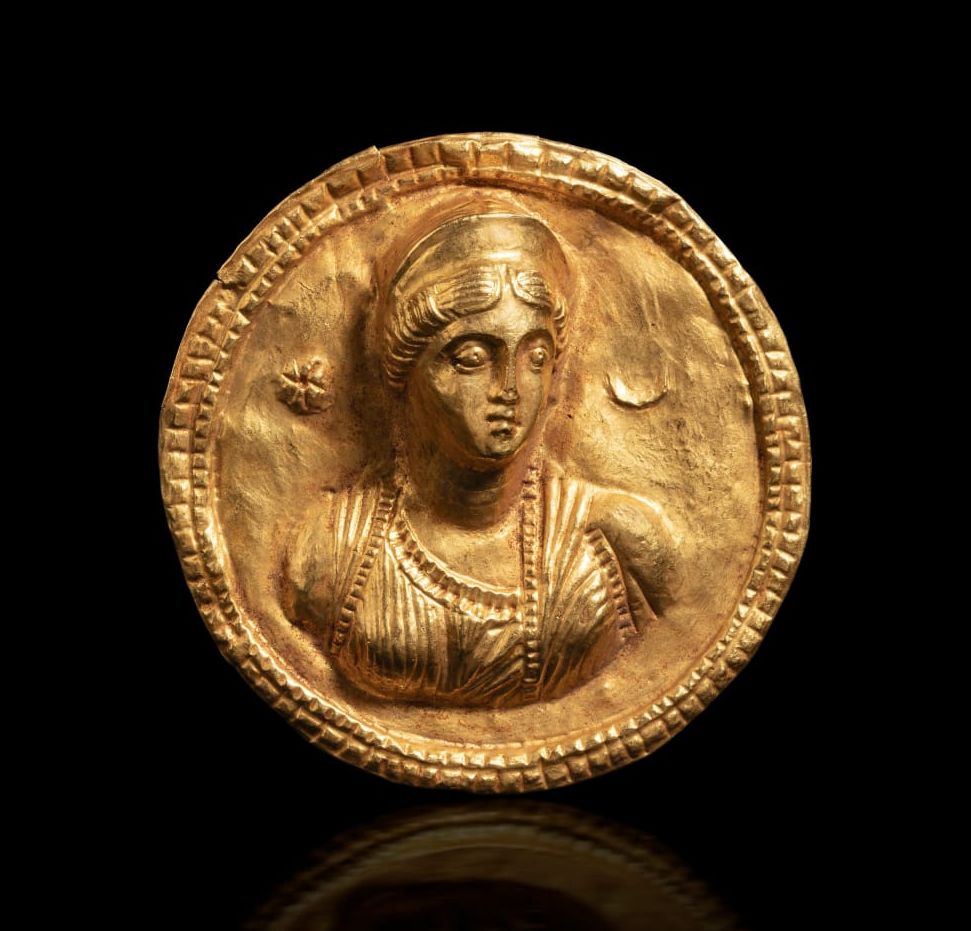Egypt



- Portrait of a woman, known as “L’Européenne”, Musée du Louvre, MND 2047 https://collections.louvre.fr/ark:/53355/cl010451181
Dated to 100-150 CE, from Antinoe [Fayum type portrait]. - 2nd-3rd century, Antinoe (?). Egyptian Museum, Turin Inv. no. S 18177 photo
See “Mummy portraits” pp. 166, 279
Egyptian Museum in Turin Inv. no. S 18177 https://collezioni.museoegizio.it - After: Repertorio d’arte dell’Egitto greco-romano. Serie B; 2003; Achille Adriani, Klaus Parlasca, Hans G. Frenz
Table H, nr 678, p. 38
Portrait of a young girl holding an ankh cross. Late 3rd century, probably from Antinoe (Antinoopolis), Egypt. Moscow, the museum of the Church of Christ Saver. Described in Погребальная пелена из Музея Храма Христа Спасителя в Москве, Фридманн Аполлинария Михайловна an article.
First photo https://pl.pinterest.com
Photo by Werner Forman >> Getty Images





Shroud, painted linen, known as “Woman with the ankh cross”, 3rd century (ca. 200 – 249), Coptic period, from Antinoe, Egypt
In Louvre, Inv. No. AF.6487 https://collections.louvre.fr
© 2007 Musée du Louvre / Georges Poncet
A city goddess personifying a metropolis of the Roman Empire from the mosaics of the banquet hall in the Nagyharsány Late Roman villa (Photo: © Hungarian National Museum) source >>



Personification of Mauretania, a mosaic from the 4th century Villa Romana del Casale in Piazza Armerina, Sicily.
Photo by R. J. A. Wilson https://bmcr.brynmawr.edu/2020/2020.03.17/

Photo source https://www.arkeolojikhaber.com

From the Christian cemetery of El Deir, Egypt; 4th century
© Photo F. Letellier-Willemin
Woman known as “Goddess”.
Mosaic comes from the Late Antique Roman villa (3rd-4th century), ancient city Pompeiopolis, Black Sea coast [today Turkey]. It is kept now at the Kastamonu Museum.
Notice the diadem, earrings, bejeweled belt, scepter, fruit, halo and red shawl.
RED SHAWL / a scarf was found loose “in a vaulted grave together with the bodies of three men, one woman and a child, all partially wrapped in linen shrouds. The scarf consists of five main fragments, of which the end pieces are well preserved, including their selvedges. The whole piece measures 120 cm in the warp by 40 cm in the weft.”
It comes from the Christian Cemetery of El Deir, in the Egyptian Oasis of Kharga, dated to around the late 4th century.
Letellier-Willemin F., “Accessories from the Christian cemetery of El Deir, in the Egyptian oasis of Khargeh, Western Desert”, Sixth conference of the research group “Textiles from the Nile Valley”, Antwerp 2009, De Moor A. and Fluck C. and Linscheid P. eds, Lannoo Publishers, Tielt 2011 https://www.academia.edu
The diptych of Stilicho (ca. 395)
Ivory diptych of the magister utriusque militiae Flavius Stilicho and his wife Serena with a son Eucherius, ca 395, kept in the tresury of the cathedral at Monza (Museo e Tesoro del Duomo di Monza). Serena was the niece and adoptive daughter of Theodosius I.
b&w picture from [wiki]
info https://journalofromanarchaeology.com/wp-content/uploads/2020/03/JRA29_28_Cameron_v4-1.pdf
Serena, detail of the diptych of Stilicho (Photo by: Leemage/ Getty Images)


Photo by: Leemage/Universal Images Group via Getty Images
Santa Maria Maggiore in Rome (432-440)
Annunciation to Mary on the triumphal arch of Santa Maria Maggiore in Rome (432-440)
1. photo of Mary with a yarn europeana
2. the scene of the Annunciation source
“Thirteen different artists worked on this mosaic. The scene shows Mary accompanied by a retinue of white-robed angels. She sits on a large chair wearing golden robes and a girdle set with pearls, and she has a diadem in her hair. She looks like a Byzantine princess. She holds in her hand the red thread ready to be woven as told in the apocryphal Gospel of James. This is thought to be the first time that a dove, representing the Holy Spirit, is shown in an Annunciation scene. On the left, an aedicule with a closed gate symbolizes Mary’s virginity. https://www.flickr.com/photos/paullew/10974655144“
The mosaic with scenes from the life of Moses from the south wall of the nave https://www.wga.hu

Photo: Fr. Lawrence Lew, OP.


Sant’Apollinare Nuovo in Ravenna (6th century)
Saint Cecilia, detail of a mosaic with a procession of twenty-two female saint martyrs led by the three magi from the basilica of Sant’Apollinare Nuovo in Ravenna, 6th century.


Catacombs of San Gennaro at Naples (6th century)
Fresco of Theotecnus’s family, with his wife Ilaritas and little daughter Nonnosa, a tomb in the Catacombs of San Gennaro at Naples, Italy; beginning of the 6th century.
Sources:
- https://www.catacombedinapoli.it/en/places/catacombs-of-san-gennaro-naple
- Photo from Wiki >> https://commons.wikimedia.org/wiki/File:Catacombe_Di_San_Gennaro_Fresco.jpg


SOURCES:
- Mummy portraits: Investigating regional variations, Maryan Ragheb Sobhy Ragheb American University in Cairo
- Погребальная пелена из Музея Храма Христа Спасителя в Москве, Фридманн Аполлинария Михайловна an article



ИНВЕНТАР ГРОБНИЦА ИЗ ДОЛА КОД БЕЛЕ ПАЛАНКЕ (REMESIANA), Ivana Popović
“[the] lavish belts that were worn by high-ranking women under the breasts. These belts, with the central medallion in the middle, although already known in the 2nd-3rd century in the eastern Mediterranean basin, from the second half of the 4th and in the 5th century they became status landmarks a high-ranking woman, which is well seen in the representation of women from the church Santa Maria Maggiore in Rome, depiction of Serena from the famous Stilicho diptych of ivory from Monza and on other monuments.” The ornaments from a woman’s grave in Dol are dated to 4th-5th century.












